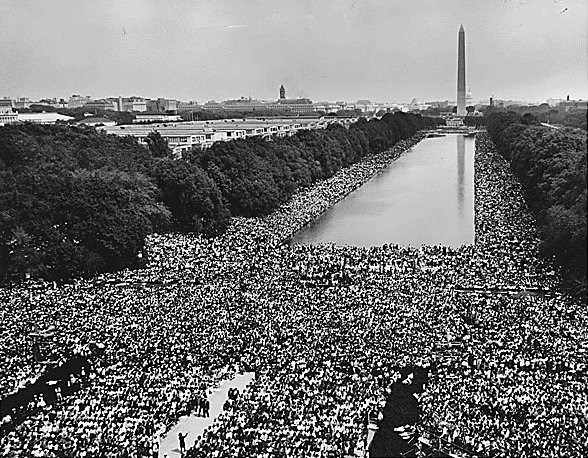Last updated: October 5, 2017
Article
Discover Clues to Historic Puzzles through the National Register of Historic Places

U.S. Information Agency, Press and Publications Service. Public Domain.
Article by Katie Orr, 2018
Imagine writing about the women’s suffrage movement without referring to Washington, D.C.’s Lafayette Park. Try to visualize the 1960s African American Civil Rights movement without explaining what happened at the Lincoln Memorial, or at Selma’s Edmund Pettus Bridge. Comprehending place is an essential part of solving any historical puzzle, and can help us better understand how people have faced conflict and negotiated compromise. Places reveal evidence of the past wherever people have gathered throughout history.
Students can research conflict at Spanish colonial forts, Civil War battlefields, abandoned mines, and the Stonewall Inn. They might choose to investigate stories of compromise at historic courthouses, on farms once supported by enslaved laborers, and at Independence Hall in Philadelphia, where the nascent American states formed a union. These iconic locations and thousands more provide historians with evidence of the motives, environments, and values that have guided historical actors. Scholars use places to interpret the past—and so can National History Day (NHD) students.
Young scholars might want to begin their history investigation at the National Register of Historic Places.... [Read more]
